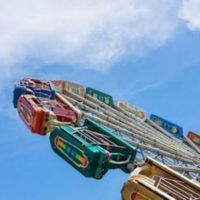Understanding The Role Of Human Error In Amusement Park Accidents

When someone is injured on an amusement park ride, we just assume that the ride broke, malfunctioned, or that it had some defect. That is the problem in some cases where people are injured on rides. But that isn’t the case all the time.
When people are injured at an amusement park or on an amusement park ride, there are a number of potential causes, and things that could have gone wrong to lead to the accident. Each one needs to be analyzed—including, often, by experts—to see just what happened to cause an accident.
Human Error Plays a Large Role
In many cases, it is not the ride itself that malfunctions or which is defective, but the cause of the accident is human error. Even the safest ride in the world is dangerous, if basic safety precautions aren’t followed. Although many rides are more computerized and automated than ever, we still largely rely on humans to operate these rides, and take steps to ensure rider safety.
Training and Experience
In some cases, amusement parks may simply fail to train their operators. Operators may be younger, too young to have the maturity to take safety seriously.
To save money, many parks will allow employees to operate multiple rides. This means that the operator may not be intimately familiar with the workings, warnings, and safety features of any one ride.
No Inspection or Oversight
Many states have little or no laws that require basic inspections of rides. An amusement ride is like your car; it has moving parts that need to be checked, maintained, or replaced. That requires regular and routine inspections. With few government inspections, and none that are even required in some states, many rides are poorly maintained.
Paying Attention
Lack of attention by park employees can be a severe problem. There are stories of riders who had no legs (because of amputation) being allowed to ride, despite the fact they can’t be strapped down. There are stories of riders who are either too small, or too large, being allowed to get on rides. Operators may fail to notice that safety features, like nets, have not been deployed. Lap belts may not be fully secured, because of inattention.
Notices
Some rides are not suitable for people with underlying health conditions. While many parks do provide warnings, many do not—or the warnings they have are incomplete, or put in places that they cannot be seen.
Watch for Your Own Safety
It probably goes without saying that the first thing an amusement park will do when you sue for injuries, is blame you, the rider. While these defenses usually have no merit, the merit that they do have, is determined by you. Make sure you follow directions, don’t take chances, and watch out for your own safety on amusement park rides.
Call the Knoxville amusement park accident lawyers at Fox Farley Willis & Burnette, PLLC, today if you were injured at an amusement park.
Sources:
nolo.com/legal-encyclopedia/amusement-park-accidents-32457-2.html
farandwide.com/s/worst-amusement-park-accidents-5d2b791956534c7a
